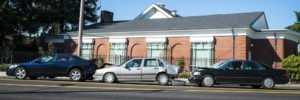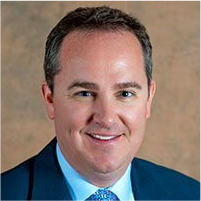
Most car accidents tend to include two motor vehicles crashing into each other, but sometimes there can be more than two motor vehicles involved. It can be challenging to determine fault when multiple motor vehicles are a part of a pile-up crash or a chain reaction of events.
Furthermore, there are usually several at-fault parties with their own conflicting stories about what happened in a multi-vehicle accident. In this case, you should hire a car accident lawyer to help you in the aftermath of a multi-vehicle crash.
At The Law Place, we have over seventy-five years of collective experience when it comes to investigating car accident cases all over the State of Florida. Our law firm will collect all of the relevant information associated with your case in order to determine who has the highest percentage of fault after a multi-vehicle accident.
There are a number of different types of multi-car accidents, such as rear-end accidents, head-on accidents, intersection accidents, and lane change accidents. Our team of car accident lawyers will step in to help you identify the at-fault parties, prove that you did not behave in a negligent manner, and pursue the compensation that you deserve from the insurance companies involved in the multi-vehicle crash.
Contact The Law Place on (941) 444-4444 to schedule a free consultation today.
What Is a Multi-Vehicle Accident?
A multi-vehicle collision is a type of car accident that involves more than two motor vehicles. Multi-car accidents happen when more than one car, truck, or motorcycle is involved in a collision. It does not matter whether there are 3 motor vehicles, 4 motor vehicles, or even more. It is still called a multi-vehicle accident.
Multi-car accidents take place in the form of a pile-up or a chain reaction crash. They usually happen on routes where drivers are moving at high speeds, like busy roads or freeways. In most cases, a motor vehicle will crash, and the other motor vehicles behind that car do not have enough distance or space between them to stop in time, so cars will keep crashing into each other depending on the amount of traffic. However, an accident can also happen when a motor vehicle rear-ends another motor vehicle in front of them, which pushes that motor vehicle to hit another motor vehicle in front of them, and so on.
Who Is at Fault in a Multi-Car Rear-End Accident?
The rear-end accident is the most common type of multi-vehicle crash. It is usually referred to as a multi-car pile-up due to the motor vehicles piling up behind each other. It is also called a chain reaction due to the fact that one motor vehicle crashes into the back of another motor vehicle in a chain reaction of events.
The First Car to Rear-End Another Car Is Usually at Fault
The fault in a rear-end collision usually lies with the driver who ran into the motor vehicle in front of them. The reason is that the driver who rear-ended the other motor vehicle had the opportunity to avoid a collision because they had the ability to drive at a safe speed, see what is going on ahead, keep a reasonable distance between other motor vehicles and take the necessary actions to avoid danger. It is the driver’s failure to complete one of these aspects that is often the cause of a car accident.
More Than One Car May Be at Fault in a Chain Reaction Accident
In a chain-reaction car accident, sometimes there can be more than one driver at fault. If you want to find the one who is at fault, then you will need to use comparative negligence law to figure it out. Comparative negligence is when each driver gets assigned a percentage of fault in a car accident under Florida Statute 768.81.
Figuring Out What Really Happened in a Chain Reaction Accident
In a few rare cases, everyone agrees on the series of events that led up to an accident. However, this is not usually the case. Most people who are involved in a car accident will have their own different versions of what actually happened. It will take a long process of comparing statements from witnesses and collecting physical evidence to figure out what really happened in the chain reaction accident. A car accident lawyer who has experience when it comes to managing multi-car accidents will be able to investigate the crash and determine who is at fault.
Who Is at Fault in a Multi-Car Accident With a Head-on Collision?
The driver who crosses into the lane of another driver is at fault in a head-on collision. A multi-car accident involving a head-on collision usually happens when a driver drifts into the lane of oncoming traffic and hits a motor vehicle that is traveling in the opposite direction. The car will then hit one or more cars which results in a multi-car accident. In this case, the driver that moved into the lane of oncoming traffic is at fault.
However, there are rare instances where the car that drifted into the lane of oncoming traffic is not at fault. For example, there are two cars moving in the same direction, but one of the cars sideswipes the other car and causes them to move into oncoming traffic and hit another car head-on. In this instance, the car that sideswiped the other one is at fault.
Who Is at Fault in a Multi-Car Intersection Accident?
Another one of the most common multi-car accidents involves an intersection where drivers make left turns or move past a traffic control device like a stop sign or a red light.
Multi-Car Intersection Accident With Left Turn
A multi-car intersection accident involving a left turn happens when a driver is waiting for oncoming traffic to clear before they perform a left turn across an intersection. The car will make the left turn and then hits or gets hit by another driver that it crosses. One of the two cars will then go on to collide with another motor vehicle.
In this situation, the fault will depend on whether the driver who was making the left turn had ‘right of way.’ If the driver who made the left turn did have the right of way, then the other car is at fault. On the other hand, if the driver who made the left turn did not have the right of way, then they will be at fault. However, that does not mean that all of the other drivers involved are not at fault too. The percentage of fault that the other drivers are given will depend on whether they were speeding or had the opportunity to avoid the accident.
Multi-Car Intersection Accident With Running a Traffic Control Device
A multi-car intersection accident involving running a traffic control device happens when a driver runs past a stop sign or a red light. In this situation, the driver is almost always at fault for causing a car accident. However, sometimes another driver might also share fault in a multi-car intersection accident. For example, a driver runs a red light and creates a T-bone by crossing another car. In this case, another car might be able to stop and avoid the accident, but another car does not stop and crashes into the rear end of the stopped car instead. The car that did not stop will share a percentage of fault for the second accident.
Who Is at Fault in a Multi-Car Lane Change Accident?
A multi-car accident involving a lane change happens when two cars are moving in the same direction, but one car changes lane and hits the car in the other lane, which causes them to collide with other cars. In this situation, the car that changes lane is at fault for causing the car accident. However, some of the other cars might also share the responsibility, but it will depend on whether they could have avoided the accident by driving slower or paying more attention to the road.
How Can Liability Be Established After a Multi-Car Accident?
A car accident lawyer will be able to establish liability following a multi-car accident by investigating the following:
- The condition of the roads (in this case, the Department of Transportation could be held partially liable).
- Skid marks on the road.
- Substantial damage to the tires that could reflect sudden braking and skidding.
- Surveillance footage around the location of the car accident.
- Statements from people who witnessed the car accident.
- Mechanical issues with the motor vehicle who caused the first collision (in this case, the manufacturer of the car or the mechanic could be held partially liable).
- Medical evidence suggests the injuries were caused by a specific action from the accident.
Contact The Law Place Today!
If you or someone you know were injured in a multi-car accident, and you are wondering who is at fault, then you should speak to a car accident lawyer as soon as possible. It is often a complicated process to determine fault after a multi-car accident, and you are going to need all of the help that you can get.
At The Law Place, we have over seventy-five years of combined experience and knowledge in determining fault after car accidents for clients throughout the State of Florida. Our law firm is aware of the complex nature of cases like multi-vehicle accidents, and we will guide you through the legal system with skill and efficiency.
If you would like to get some answers to your questions after a car accident, then give us a call now. Our phone lines are open twenty-four hours a day, seven days a week.
Contact The Law Place on (941)-444-4444 to schedule a free consultation today.

